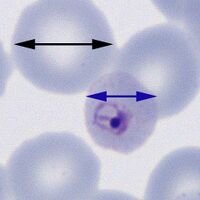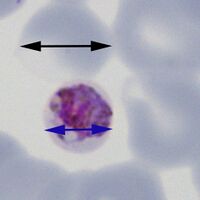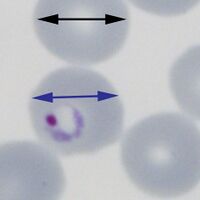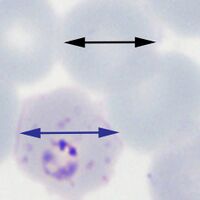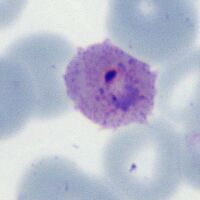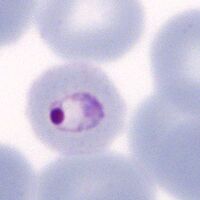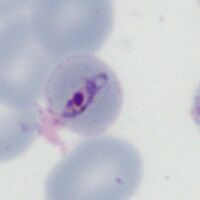Red cell size
From haematologyetc.co.uk
Navigation
Go Back
| How is red cell size and shape affected as malaria develops?
SMALL ROUND RED CELLS P.malariae: The red cells in this species remain round and are often small in size The early (A) and late trophozoites (B) shown in this image each lie within round erythrocytes with reduced size. RED CELLS WITH UNCHANGED SIZE AND SHAPE P.faliparum Red cell size and shape is generally unchanged although they may become crenated
The early (A) trophozoites lie within red cells that do not change size or shape, at later development (B) they may remain unchanged or acquire subtle crenation. ENLARGED AND DISTORTED RED CELLS For both P.ovale and P.vivax the red cells become progressively enlarged and distorted as the parasites develop. It may not be possible to distingish the species based on red cell appearances, but there are differences which should be looked for. P.ovale: The rings are larger and more robust than in P.falciparun, and they enlarge further during parasite development although in this species the characteristic ring appearance can often still be distinguished even late in development. Note that red cells become enlarged and distorted (typically elongation and fimbriation) with characteristic James' dots. P.vivax
|
